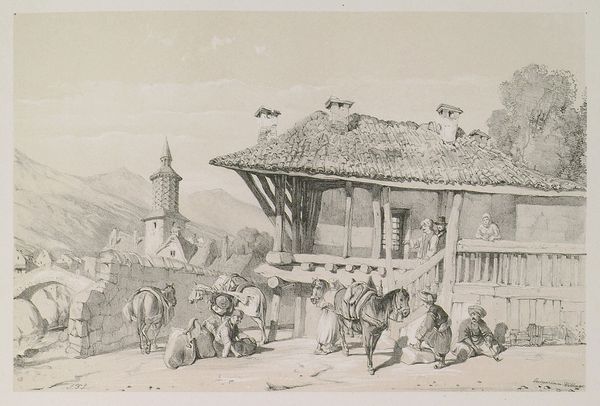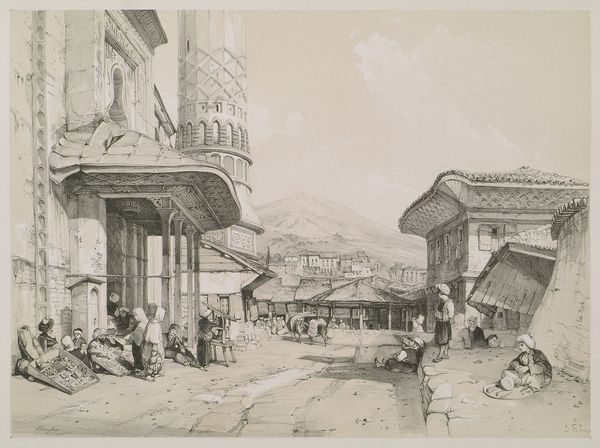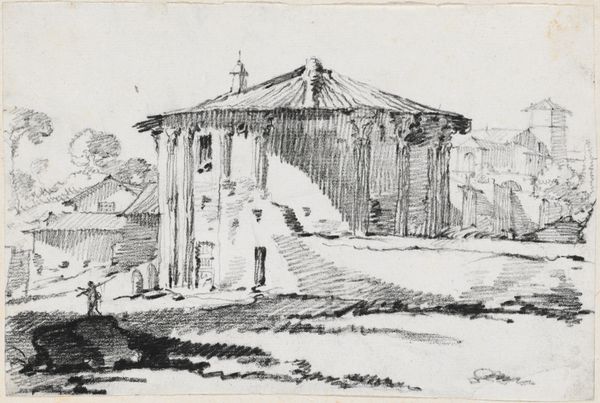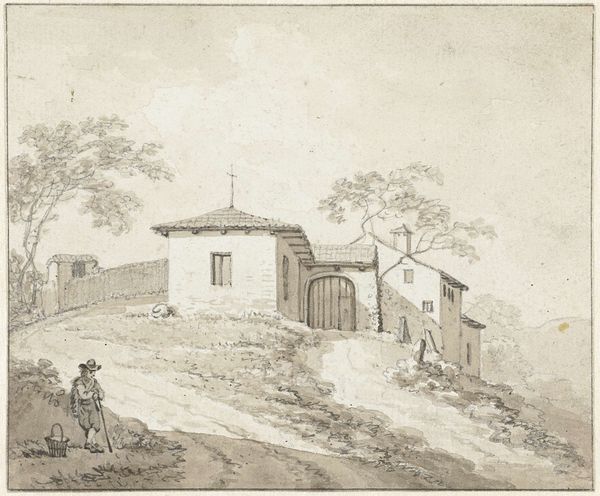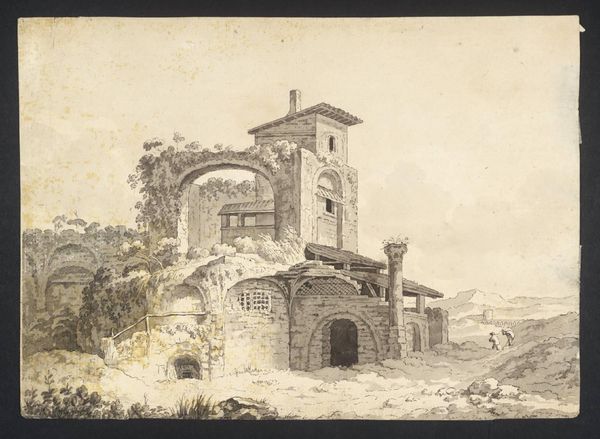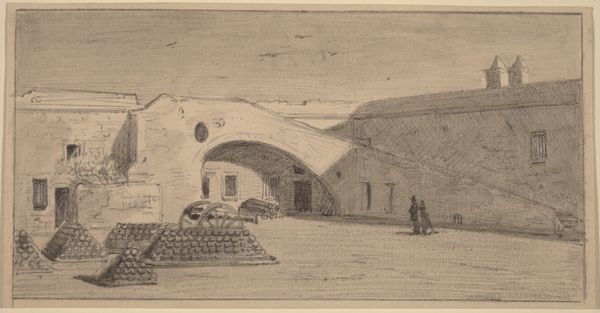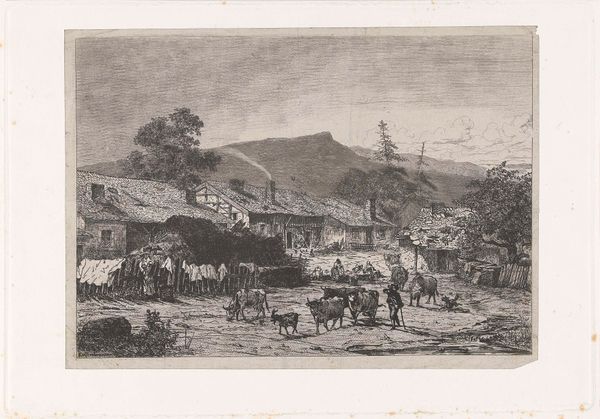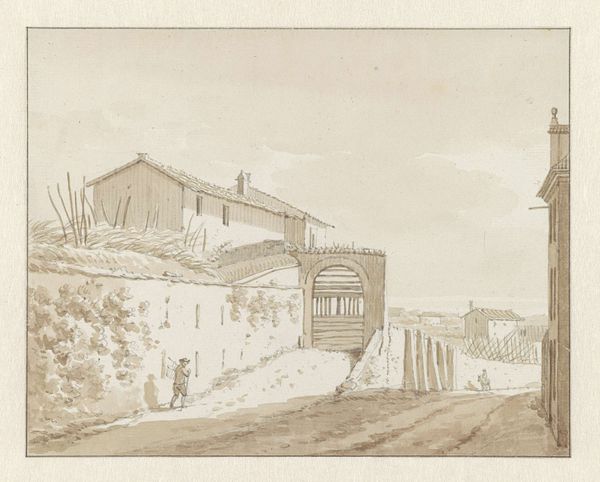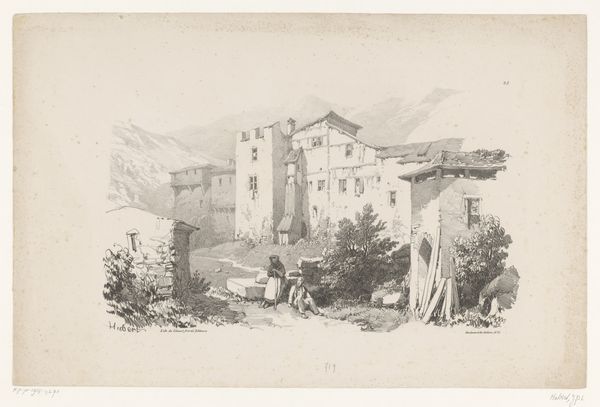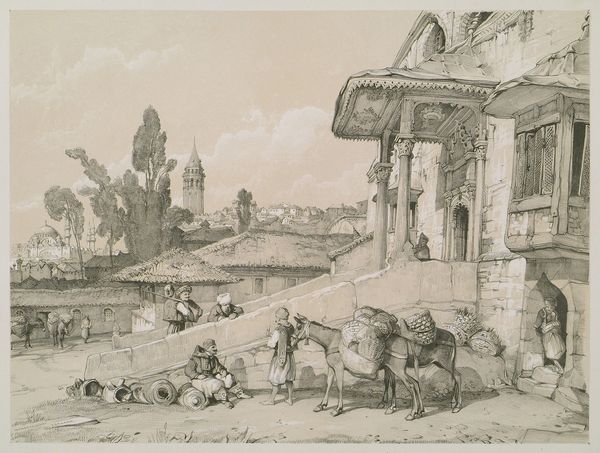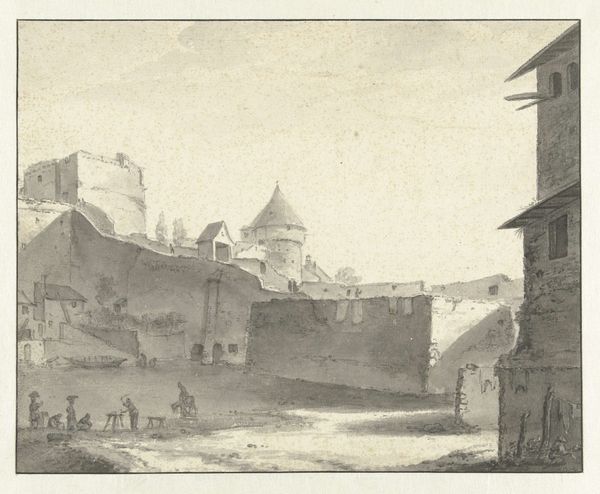
drawing, pencil, architecture
#
drawing
#
landscape
#
pencil drawing
#
romanticism
#
pencil
#
orientalism
#
architecture
Copyright: Public domain
Curator: This is John Frederick Lewis’s 1838 pencil drawing titled “New Orsova; Exterior of the Pasha's Residence.” The detailed architecture immediately caught my eye, but something about the figures introduces an odd note. Editor: There is a melancholy here, almost as if we're seeing a scene both incredibly detailed and yet devoid of immediate joy. The muted palette and the precision in line work give it an almost clinical, detached feel. But the cultural significance can’t be ignored; what might it mean for this residence of a Pasha to be rendered with such carefulness? Curator: It speaks to the Orientalist movement. Lewis, like many artists of his time, was captivated by the “exotic East.” His meticulous detail wasn't just about depicting reality. He saw and captured the architectural language of the time, even if seen through a European filter. The residence isn’t just a building; it's a stage for power and a different mode of being in the world. Notice how the textures are handled differently in this medium. Editor: I do see that. It seems less interested in natural light or perspective than simply recording what is *there*. The geometry of the residence feels almost confrontational; how does the positioning of figures – dwarfed by the structure and light – speak to European notions of power or influence in the region? Curator: The scale serves multiple purposes. On the one hand, there's that romantic element: individuals humbled before something grand and ancient, emphasizing the “sublime” in the face of historical and cultural difference. On the other, this imagery perpetuated a certain image, confirming cultural preconceptions and notions about hierarchies within those contexts. It invites curiosity and maybe even envy. Editor: An ambivalent encoding, certainly. What stays with me is the overall tone—a carefully controlled observation. Looking at the drawing more, it almost seems like an objective recording of a cultural 'fact.' Curator: It shows the intricate layers of observing "the other." Lewis’ work, while undeniably skilled, asks critical questions about how different cultures were viewed. Editor: It encourages a careful deconstruction to examine the cultural presumptions it carries in every line.
Comments
No comments
Be the first to comment and join the conversation on the ultimate creative platform.
